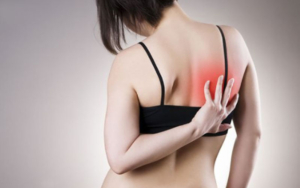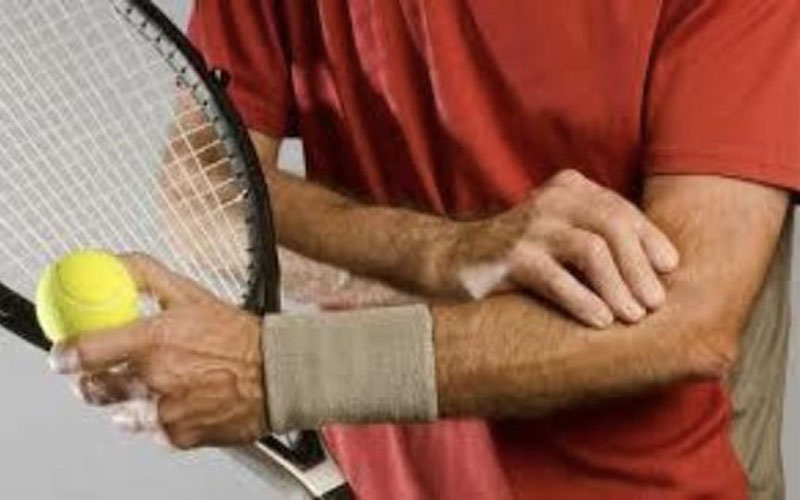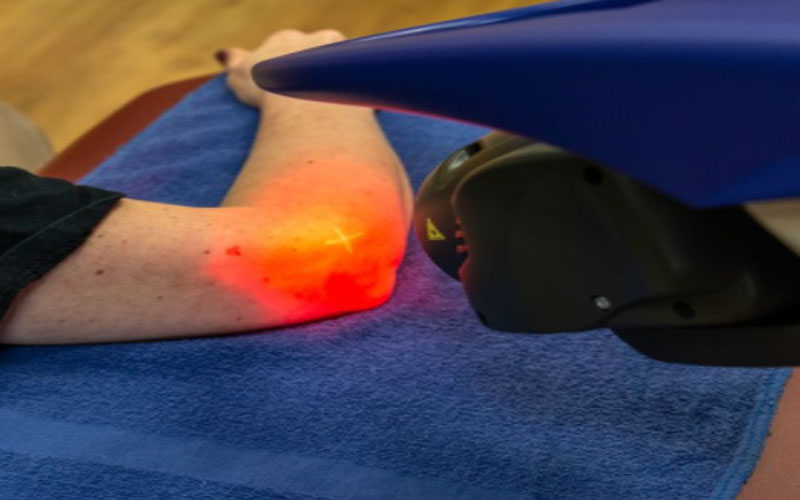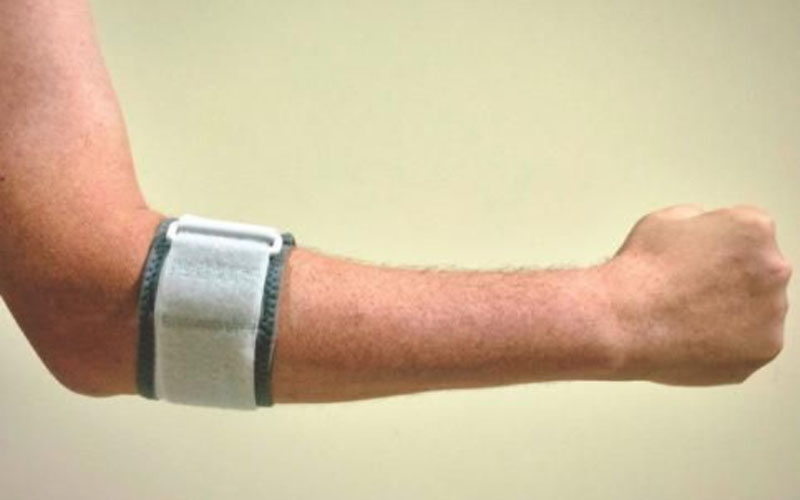
Tips on Relieving Pain Between Shoulder Blades
A detailed overview of the most effective tips for relieving pain between shoulder blades.
Share
Share
Tennis elbow, also known as lateral epicondylitis, does not only affect tennis players. Tennis elbow is the most common cause of elbow pain, and it’s thought to be caused by small tears in the tendons that connect the forearm muscles to the arm bone at the elbow joint.
Tennis elbow is most common in people between the ages of 30 and 50. Tennis elbow affects both men and women equally, and it affects the dominant arm in roughly 75% of cases. In this article, we take a detailed look at what tennis elbow is, its causes, symptoms, and forms of treatment for Tennis elbow. Read through to get a better understanding of this condition

Tennis elbow is a condition in which the tendons connecting the forearm muscles to the outside of the elbow become inflamed. It is a kind of tendinitis that produces pain in the elbow and arm due to swelling of the tendons. These tendons are tight tissue bands that link your lower arm muscles to the bone. Overuse of the forearm muscles and tendons and those around the elbow joint is a common cause.
Tennis elbow is a condition in which the tendons of your forearm muscles adhere to a bony protrusion on the outside of your elbow, causing pain. The pain may move to your forearm and wrist.
Despite its name, tennis elbow can affect anyone who has never been near a tennis court. Tennis elbow is caused by repetitive gripping movements, particularly those involving the thumb and first two fingers. Tennis elbow is the most prevalent cause of elbow pain that leads to a visit to the doctor. It can strike anyone at any age, although it’s most frequent around the age of 40.

The tennis elbow is characterized by discomfort in the bony knob on the outside of the elbow. The damaged tendons attach to the bone through this knob. Causing recurrent pain on the outside of the upper forearm, right below the bend of the elbow, is the most prevalent sign of tennis elbow. Pain may be felt in the arm, all the way to the wrist.
The following are the most prevalent symptoms of tennis elbow:
Tennis elbow pain normally develops gradually over time, although it can occasionally strike unexpectedly. Pain can also be extremely variable, ranging from mild to severe and incapacitating.

Tennis elbow is caused by repeatedly performing improper arm movements. Small tears in the tendon attachment at the elbow can result as a result of this. This is the repeating motion and force of hitting a ball with a racquet in tennis. The power of a racquet swing can rotate through and around the wrist if the technique is incorrect. This causes a wrist movement rather than an elbow or shoulder movement. This might put additional strain on the tendon, causing irritation and inflammation.
Tennis elbow isn’t just a problem for athletes. Many patients with tennis elbow engage in professional or recreational activities that demand the forearm muscle to be used repeatedly and vigorously, or the wrist and hand to be extended repeatedly. Tennis elbow is particularly common among painters, plumbers, and carpenters. According to studies, tennis elbow affects auto workers, cooks, and even butchers at a higher rate than the general population. These vocations are regarded to be prone to injury due to the amount of repetition and weight lifting necessary.

Tennis elbow can persist anywhere from six months to two years, with the majority of people (90 percent) recovering completely within a year. The most crucial thing to do is rest your injured arm and cease doing the activity that created the problem in the first place.
Simple remedies for discomfort include holding a cold compress against your elbow for a few minutes many times a day, such as a bag of frozen peas wrapped in a towel.
Tennis elbow usually improves on its own. If over-the-counter pain relievers and other self-care techniques don’t work, your doctor might recommend physical therapy. Strains, sprains, and repetitive motion injuries all have an inflammatory component and can be treated effectively with laser therapy.

Employ a 635 nm wavelength of low-level laser light at changing frequencies during the therapy procedure, which your biological tissue absorbs. This red light triggers a healing response in the affected area, with the injured cells triggering a physiological response that promotes cell regeneration.
In most cases, wavelengths of 600 to 700 nanometres are required to treat superficial tissue. The technology innovation is non-invasive and painless even if the laser light-emitting device comes into contact with the skin. This treatment takes only a few minutes.
Laser therapy reduces nerve sensitivity by lowering bradykinin, which is a pain-inducing hormone. It produces analgesia effects by normalizing ion channels [cellular gatekeepers] and releasing endorphins [the body’s natural pain reliever] and enkephalins [related to endorphins]. On particular nerve fibers, it also has a pain-blocking action.
Improved Vascular Activity- Laser light promotes the development of new capillaries in damaged tissue, hastening the healing process and allowing wounds to heal faster.
Laser treatment is very efficient in eliminating painful trigger points. It’s also a good approach to stimulate acupuncture sites without the pain that comes with needling.
Tissue Repair and Cell Growth are Accelerated: Laser photons penetrate deeply into tissue and speed up cellular reproduction and growth. The cells of tendons, ligaments, nerves, and muscles are repaired faster as a result of exposure to laser light.

You must move in a smooth and controlled manner. When executing these exercises, don’t jerk your wrist. After you’ve finished exercising, apply ice to your elbow until it’s completely numb:
Wrap a rubber band around your thumb and fingers, then cup your hand gently. Spread your thumb and fingers apart, then gently bring them back together. Repeat for three sets of ten repetitions. This exercise should be done once or twice a day.
Hold a soft object in your hand (for example, putty or a little rubber ball) and squeeze it for 10 to 15 minutes two or three times a day.
Hold the hand with the other hand while extending one arm straight out in front of you. Bend your wrist down (and slightly out) until a stretch is felt. Relax after 15 to 30 seconds of holding. Repeat the process two or three times more. Do this workout at least twice a day.
While lateral epicondylitis is a painful and frustrating condition, rest assured that you are not alone. This is a common issue, and the vast majority of people find tendon healing and relief with the right time and therapy. Contact us, at Raycome our dedicated team of experts are here to help you through this healing journey.

A detailed overview of the most effective tips for relieving pain between shoulder blades.

A detailed overview of the various forms of summer allergies and how to defeat them

A detailed overview of the Keto diet, its effects on hypertension, and the available better diet options.

A detailed description of what tennis elbow is, its symptoms, causes, and use of laser treatment to treat tennis elbow.
![]()
Shenzhen Raycome Health Technology Co., Ltd
Address: No.501, Block B, Xinfeng Building, Yangguang Community, Xili Street, Nanshan Dist, Shenzhen.518055, China.
Tel: (86) 755 2663 3509 (International Line)
Tel: (86) 755 2663 3519 (国内业务专线)
Email: sales@raycome.com
Web: www.raycome.com

 Keto Diet and Hypertension: All You Need to Know
Keto Diet and Hypertension: All You Need to Know 